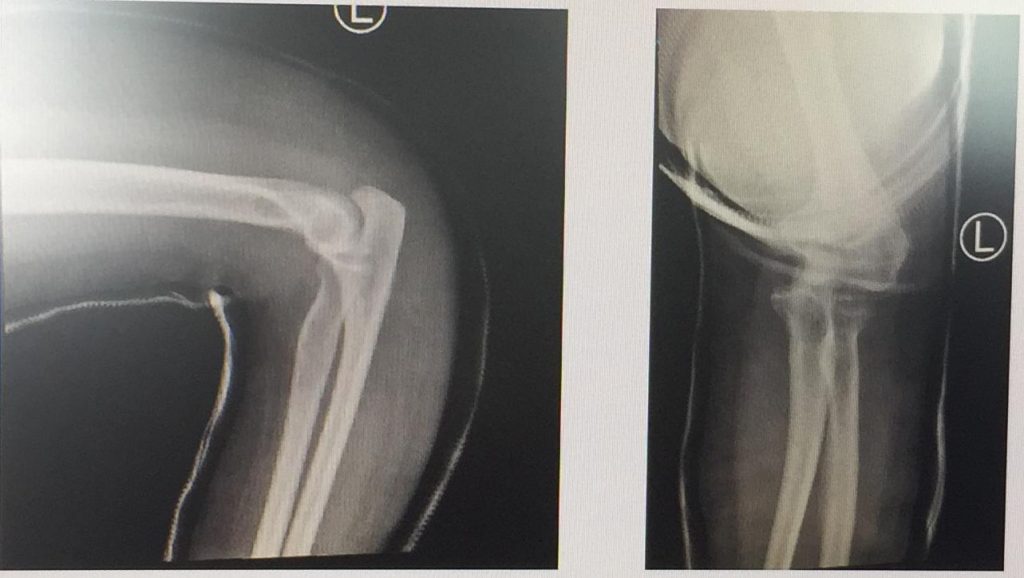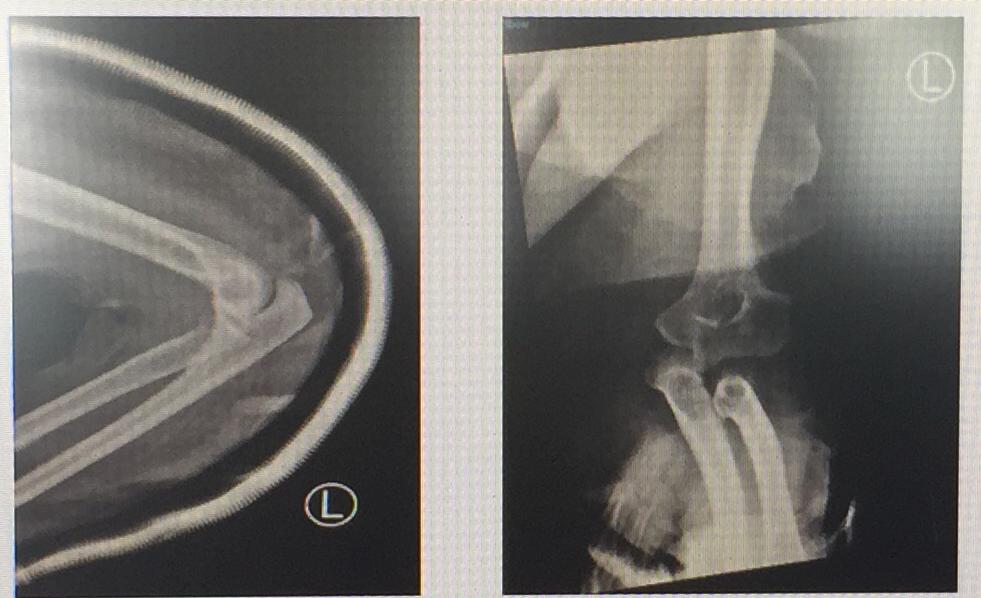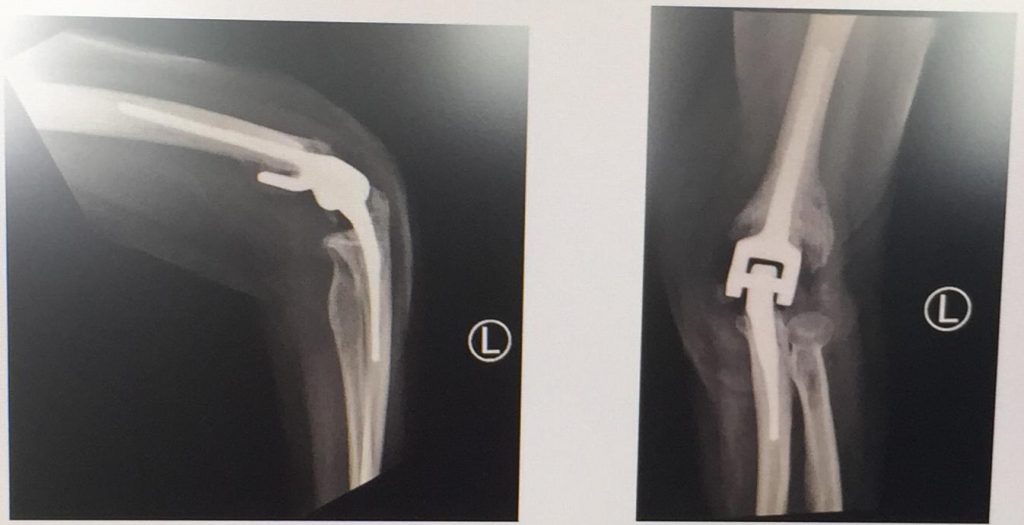Recurrent elbow instability
This is a 82-year-old lady who presented with recurrent elbow issues after being seen and managed by a previous clinician in a different hospital. She was referred to Dr Sathappan by one of his patients with a view to unsolved elbow issues. All the problems started after a fall which incurred when she was at home. Following which, she was unable to move her left elbow. In view of the age of the patient and the mobility which was always dependent on a walking frame, the loss of elbow function was severely debilitating for her. She was complaining of pain and lack of strength in the left elbow. She was initially seen in the Accident & Emergency Department and then treated for elbow dislocation with manipulation and reduction. Following the latter, she had a casting done.
She was then seen in the clinic with a review and the elbow X-ray was noted to have persistent subluxation of the elbow. What was unfortunate was that the review was done a near 2 weeks following the initial treatment. Elbow joint like all the joints are very important for mobility and prolonged mal-position of the joint or mal-alignment will result in severe stiffness and loss of upper limb movement. In this patient, having been casted for 2 weeks in a subluxed position, it meant that the elbow was non-functional. There were 2 further attempts by the clinician to try and reduce the elbow and immobilize them in a cast. Due to ineffective outcomes, she then consulted Dr Sathappan for an opinion approximately 5 weeks after the clinical incident.

At assessment, CT scans as well as radiographs were done to evaluate. CT scans are very important in assessing the elbow position with minimal doubt of mal-alignment or mal-position. It also gives you an impression of the fracture fragments. Dr Sathappan discussed with the patient and the family on the importance of repositioning the elbow. Since the treatment had been delayed extensively, a close reduction i.e. without surgery will be ineffective. Dr Sathappan offered them 2 options: elbow reduction with arthroscopic assistance versus elbow replacement. Since she had no previous elbow problems till the fall and all problems ensued after the ineffective clinical management, Dr Sathappan offered her the former treatment as a first option. In view of her age, the biological recoverability, Dr Sathappan informed her that percentage of recovery would be approximately 60 – 80%. He did arthroscopy to remove all the small loose fragments and reduced the elbow in an appropriate position and applied casting.
Even though the elbow was in good position for a week, Dr Sathappan’s vigilant observation identified progressive recurrent subluxation. This happened due to suboptimal soft tissue envelopes that had developed in view of her age and the 5 weeks of earlier management in a different hospital. After much extensive discussion, Dr Sathappan advised her that elbow replacement will be the best long-term solution.

She underwent elbow replacement with immediate range of motion exercises. She has now resumed back to all her daily functions and is able to do all activities of daily living.

Joint injuries including in such cases such as elbow, are very important to be managed early and appropriately. When the mal-position is accepted, the person loses functional recovery and loss of the limb function. Thus, appropriate investigations and clinical management are fundamental to good recovery in joint injuries in the musculoskeletal system.
Share this blog via:





